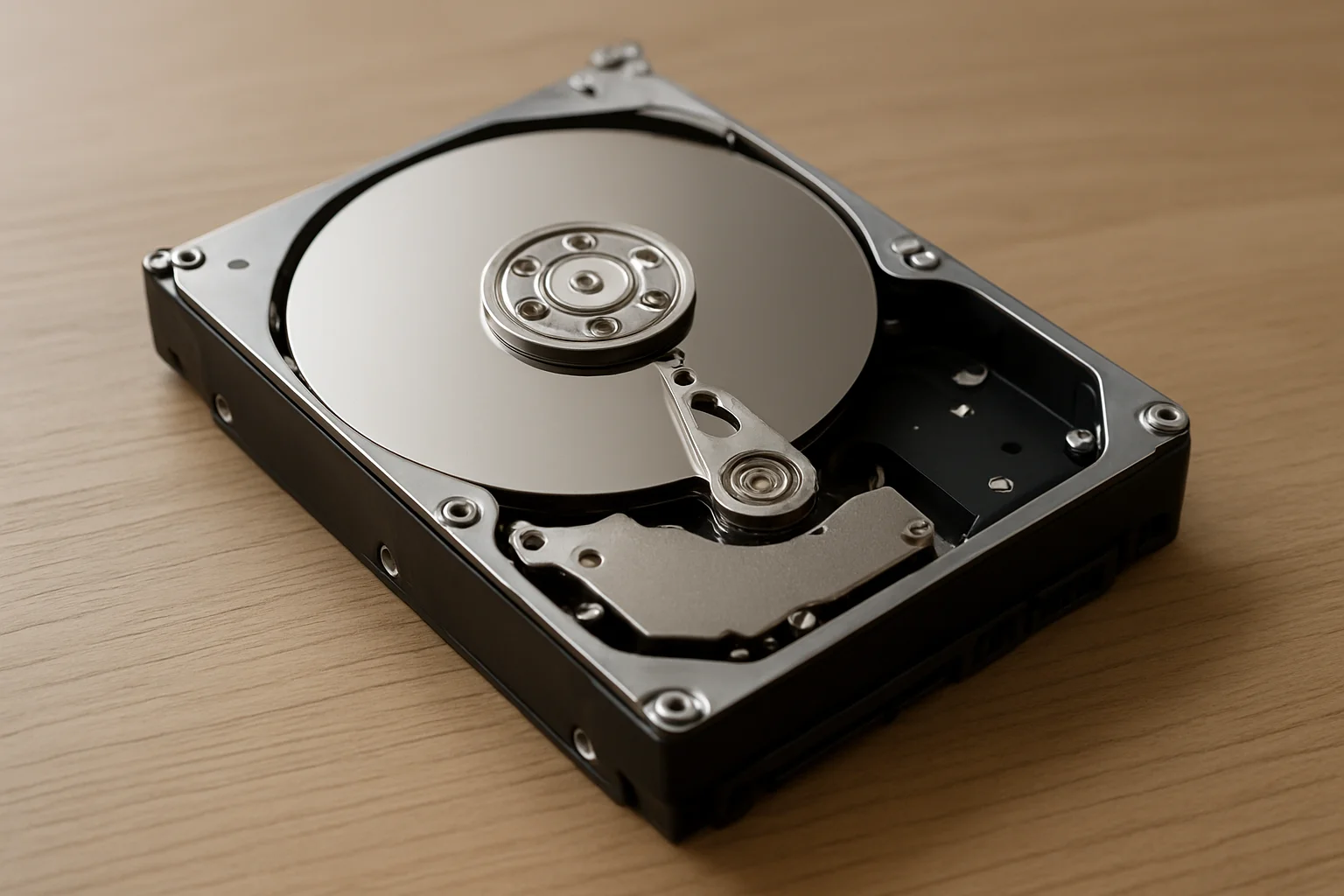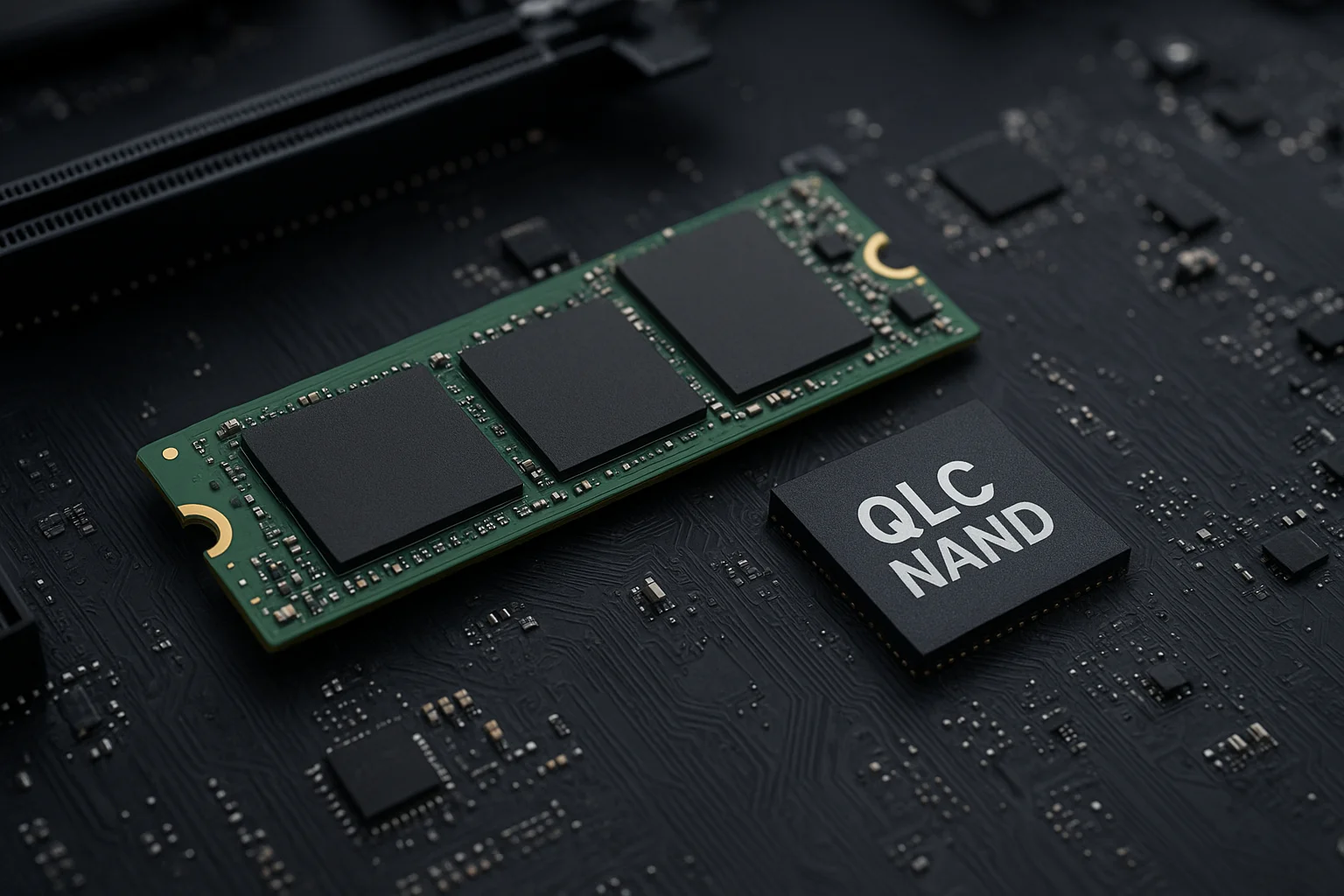What Are Helium Hard Drives?
Helium hard drives are a type of hard disk drive (HDD) in which the air inside the drive enclosure is replaced with helium gas. Unlike traditional HDDs that operate in an air-filled environment, these drives take advantage of the fact that helium is about one-seventh the density of air. This lower density significantly reduces friction and turbulence created by the spinning platters.
The first commercial helium-filled drives were introduced in 2013, marking a turning point in the storage industry. By using helium, manufacturers could design drives with more platters stacked inside the same enclosure without overheating or consuming excessive power. As a result, capacities that were once unimaginable with air-filled drives became achievable.
A typical helium hard drive looks almost identical on the outside to a conventional HDD, but inside it contains a sealed chamber to ensure the helium does not escape. This sealed design is critical, as even a small leak would compromise performance. To achieve this, manufacturers developed advanced hermetic sealing techniques that keep helium securely inside for the entire lifespan of the drive.
In practical terms, helium hard drives are known for offering higher storage density, reduced power consumption, and cooler operating temperatures. These characteristics make them especially valuable in environments where efficiency and reliability are top priorities, such as large-scale data centers and enterprise servers.
The Science Behind Helium Technology
The use of helium inside hard drives is based on its unique physical properties. Helium is a noble gas that is lighter and less dense than air, which directly influences the way internal components behave when the platters spin at high speeds. Lower density means that the spinning disks experience significantly less aerodynamic drag, allowing them to move with reduced resistance.
This reduction in turbulence enables engineers to place more platters closer together without causing overheating or instability. With less drag, the read/write heads can also operate with greater precision, which results in better track alignment and improved data reliability. Essentially, helium creates a calmer environment within the drive, minimizing vibration and allowing tighter data storage.
Another critical aspect is thermal behavior. Because helium conducts heat differently than air, it helps maintain lower internal temperatures during continuous operation. This not only reduces energy requirements for cooling but also decreases mechanical stress on moving parts, extending the drive’s lifespan.
To keep helium inside the enclosure, manufacturers rely on hermetic sealing techniques using advanced materials and laser welding. These processes ensure that helium remains trapped within the drive for many years, overcoming one of the major engineering challenges in making the technology commercially viable.
From a physics perspective, the benefits of helium can be summarized as the combination of lower resistance, reduced turbulence, and stable thermal conditions. These factors work together to allow higher storage density, more efficient operation, and improved reliability compared to traditional designs.
Key Advantages Over Traditional Air-Filled Drives
Helium-filled hard drives provide a range of benefits that clearly set them apart from conventional air-filled models. One of the most noticeable advantages is the ability to achieve much higher storage capacities. Because helium reduces internal drag, manufacturers can add more platters within the same enclosure without compromising performance, making these drives ideal for massive data storage needs.
Another important advantage is lower power consumption. With less resistance inside the drive, the platters require less energy to spin at the necessary speeds. This translates into a reduced energy footprint, which is particularly valuable for large-scale data centers where thousands of drives operate simultaneously and power efficiency directly impacts costs.
Heat management is also significantly improved. Helium environments generate less friction and turbulence, resulting in cooler operating temperatures. Drives that run cooler not only use less energy for cooling systems but also experience fewer thermal stresses, leading to more consistent performance under heavy workloads.
Reliability is another key area where helium drives stand out. The reduced mechanical stress caused by a calmer internal environment minimizes wear on moving parts. This contributes to longer operational lifespans and a lower risk of failure compared to traditional HDDs, making them a safer choice for storing critical data.
Noise reduction is an often-overlooked benefit. Because of the stable and less turbulent atmosphere inside, helium drives typically operate more quietly. This improvement may seem minor on a small scale but becomes valuable in professional environments where large arrays of drives are used.
Overall, these advantages—higher density, lower energy usage, cooler temperatures, greater reliability, and quieter operation—make helium-filled hard drives a preferred solution for organizations that handle vast amounts of information on a daily basis.
Why Helium Enables Higher Capacities
The primary reason helium makes it possible to build higher-capacity drives lies in its low density compared to air. Inside a traditional HDD, air creates turbulence when the platters spin at thousands of revolutions per minute. This turbulence limits how closely the platters can be stacked, as too many layers would generate excessive heat and mechanical instability. Helium, being lighter, produces far less resistance, allowing engineers to place more platters in the same enclosure.
By increasing the number of platters, manufacturers directly increase the drive’s storage capacity. For example, where an air-filled drive may be limited to 6 or 7 platters, a helium drive can reliably hold 8, 9, or even 10 platters without risking overheating or energy inefficiency. Each additional platter adds terabytes of storage, pushing overall capacities into ranges previously unattainable with standard HDD technology.
Helium also improves track precision and alignment. With reduced turbulence, the read/write heads can follow data tracks more accurately, enabling narrower tracks to be written onto the platters. This process, often referred to as increasing areal density, allows more bits of data to be stored per square inch. As a result, capacity is boosted not only by the number of platters but also by the density of data on each platter.
Another factor is that helium reduces the mechanical stress on components, ensuring that drives with many platters remain stable and durable. Without helium, the vibrations from tightly packed platters would lead to performance issues and premature failures. With a calmer internal environment, these risks are minimized, making high-capacity configurations both practical and reliable.
Together, these elements—denser platter stacking, improved track precision, and reduced mechanical strain—explain why helium technology has become essential for building the largest hard drives available on the market today.
Energy Efficiency and Cooling Benefits
One of the most significant advantages of helium-filled hard drives is their ability to deliver greater energy efficiency compared to traditional air-filled models. Because helium creates less resistance when platters spin, the motor requires less power to maintain the same rotational speed. Over time, this reduced power demand translates into lower operational costs, especially in facilities where thousands of drives run continuously.
Another important benefit is the improvement in cooling performance. Drives generate heat during operation, and in large data centers, cooling represents a major portion of energy consumption. Thanks to the lower friction environment inside a helium drive, less heat is produced in the first place. This results in cooler drive temperatures and reduces the workload placed on external cooling systems.
To highlight these differences, the table below compares key aspects of energy use and cooling between helium-filled and air-filled drives:
| Aspect | Helium-Filled Drives | Air-Filled Drives |
|---|---|---|
| Power Consumption | Lower energy usage due to reduced drag on spinning platters | Higher energy demand as platters face stronger air resistance |
| Operating Temperatures | Cooler operation with less internal heat generated | Warmer operation requiring additional cooling resources |
| Cooling Requirements | Less reliance on external cooling systems | Greater dependence on active cooling to maintain stability |
| Long-Term Cost Impact | Reduced electricity and cooling expenses over time | Higher operational costs due to greater energy and cooling needs |
These efficiency and cooling benefits are particularly valuable in environments where drives operate 24/7. Even small reductions in power and heat per unit can scale into substantial cost savings and improved sustainability when multiplied across large storage infrastructures.






